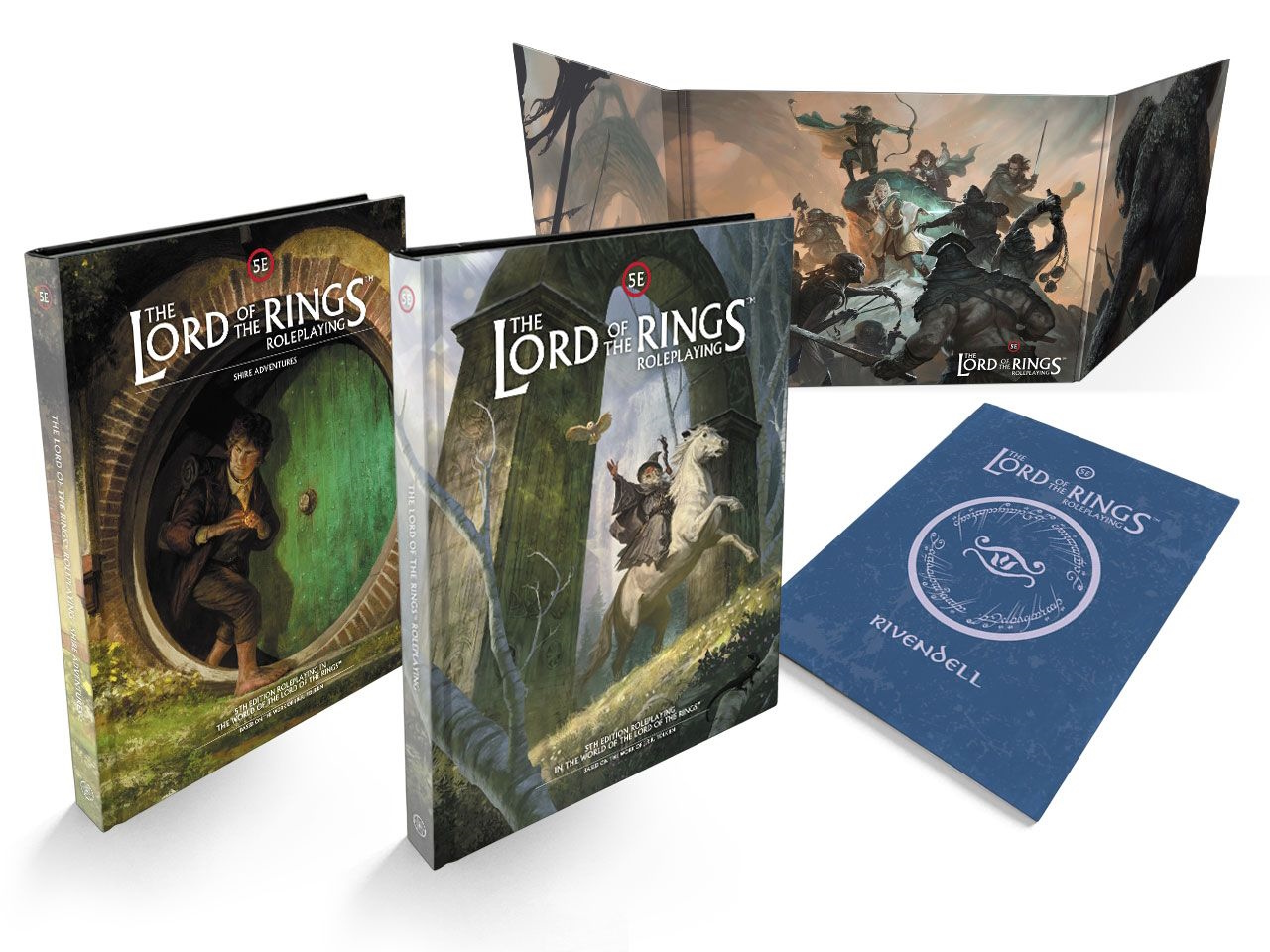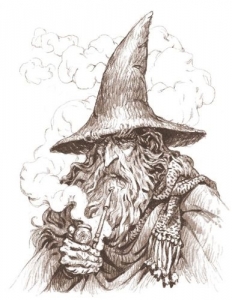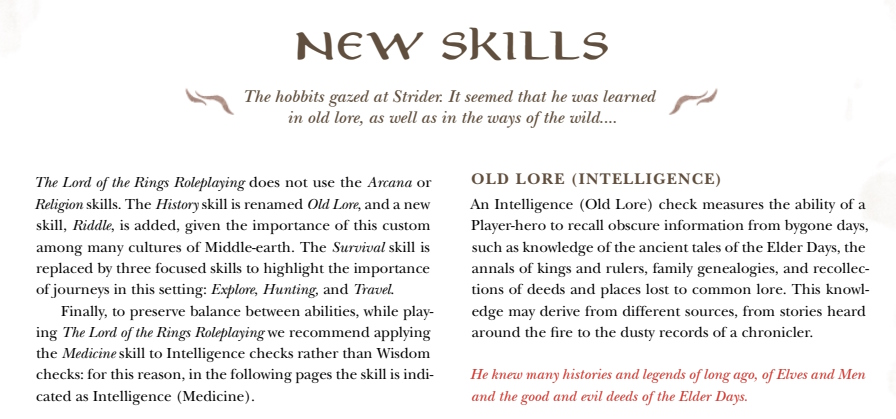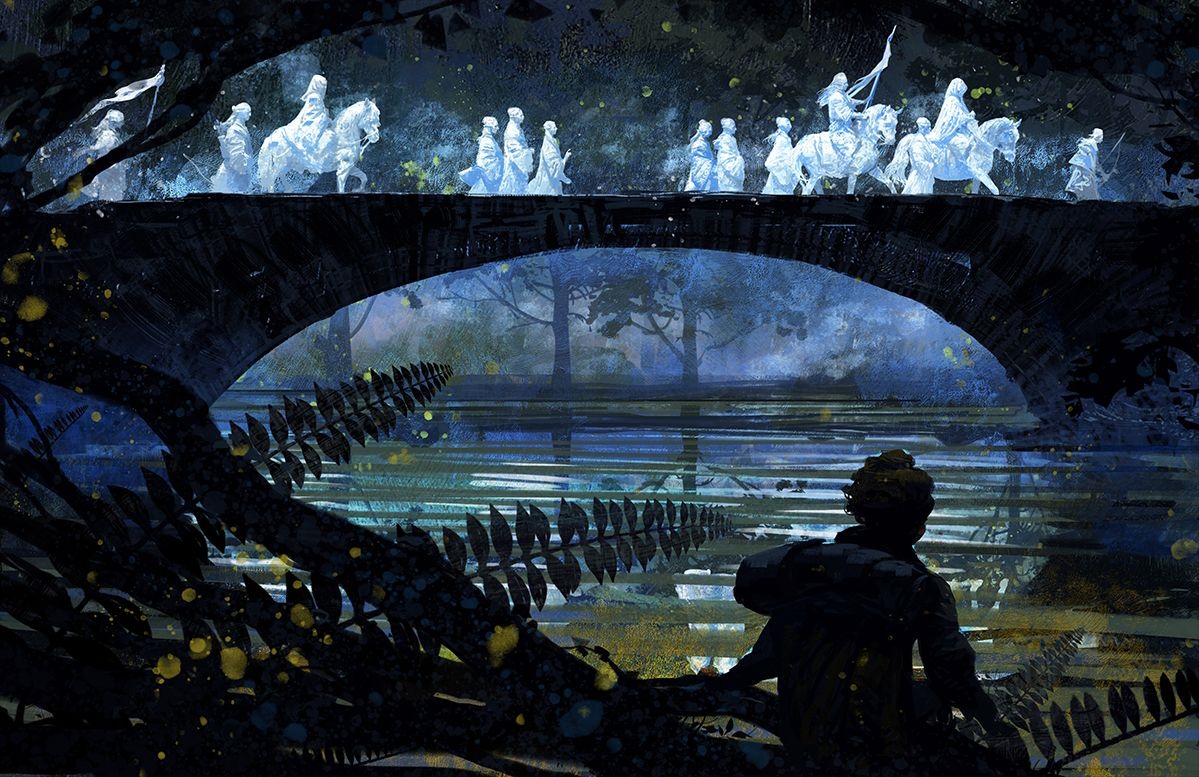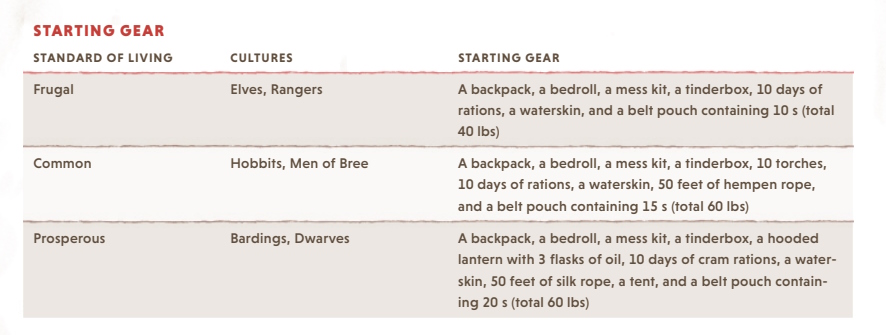by Andrew Skelton (Outfoxed)
There are few novel series as beloved as The Lord of the Rings. The work by J. R. R. Tolkien about the fantastical world of Middle Earth has captured the minds and hearts of people worldwide since 1954. The series has spawned several movies, games, and even original series, as its author provided countless references during his time building Middle Earth from nothing more than an idea. There have been other tabletop RPG experiences based on The Lord of the Rings, of course, however, with the surge of new players to 5e Dungeons and Dragons, it was ripe to have an adaptation made to set players in the familiar lands of The Shire, Bree-land, and the Lone-lands of Eriador. Enter The Lord of the Rings Roleplaying, a 5e remastering of The One Ring roleplaying game, to allow new and expanded access for fans of The Lord of the Rings. Is this just a reskinned experience with nothing to offer itself, or does it provide plenty of opportunity to shine on its own merits?
The source book’s prologue does an excellent job of breaking down some of the LOTR lore for those who either may be new to the series, or perhaps need a short refresher course on what occurred. Set in the 80 year period between The Hobbit and The Lord of the Rings, players are set to band together to face off against the growing Shadow creeping across the land. Guided by a loremaster (Dungeon Master in D&D games), you’ll set off on fabulous adventures with your friends, conquering various perils and threats, and enjoying the downtime after a hard fought campaign.
The game breaks itself simply enough into three parts: Combat, Council, and Journey. Combat is simple enough to understand – seek out the dangers of Middle Earth and eliminate them to protect the Free Peoples of the land. Council is the social aspect of any TTRPG. Players will meet with various representatives of the land, including major figures of lore such as Gandalf or Elrond if necessary. Journey, of course, comprises much of the rest of the gameplay, as travel and scouting will also be very important to testing the mettle of the company of heroes.
One major storytelling device I noticed right away was the company system. Gone are the days of finding ways to bring a disparate group of adventurers together for a common cause. The system automatically assumes familiarity between each player’s character by beginning the adventure already joined together in the company. The players can freely discuss how everyone came together in the first place, for certain, but it allows a certain level of immediate advancement for the Loremaster to get players going into their adventures. Another hook to bring them together may be the possibility of working for a patron. Any number of powerful individuals exist in Middle Earth, all looking to bring people together for a common cause. One idea I thought of as I was brainstorming the type of character I’d play in this setting was a Ranger being tasked by their chieftain Strider to gather like-minded fellows to investigate strange goings on throughout the Bree-land and surrounding areas.
Likewise, any good Company will need some sort of safe haven where they can seek success from their journeys, such as The Prancing Pony of Bree, or perhaps the Green Dragon in the Shire. This also does not have to be a singular location; as the company expands further out, it may eventually include several other locations.
To further cement the bonds of the Company are the introduction to what’s known as Fellowship points. These points are obtained primarily through the number of people in the Company, however additional means can be found to gain more along the journey. A Fellowship point can be used for a variety of things such as succeeding a skill check, ensuring a combat roll passes, or making sure diplomatic relations can be established or maintained. They can also be used to trigger some special perks from whatever patron the party is working with. The caveat to this is the entire Company needs to agree on their use. One player cannot simply use all of them because they’re having a bad dice day and the rest of the group is cut out when they might need those points the most.
Other changes from the base system of note are the fact the Arcana or Religion skills are not used in this source. History is renamed Old Lore, and a new skill called Riddle has been added, as such things are incredibly important across multiple cultures of Middle Earth. The Survival skill has also been replaced by three skills – Explore, Hunting, and Travel – to ensure these individual actions have equal importance in the campaign. Medicine, likewise, has been moved to using Intelligence modifiers instead of Wisdom to balance skill checks across all of the skill changes made above.
Certain artifacts like rings or cloaks, and some talents and spells, can unlock what’s known as a magical success, which earns an automatic success on whatever action is taken. This is explained as the player hero performing an action that is practically impossible to accomplish without said aid, such as hiding in plain sight, figuring out a route across an area without needing to worry about things like maps or terrain, and other such feats that would otherwise be daunting to the group.
More interestingly, since all players are expected to play characters fighting against the enemies of the Free People, the introduction of Shadow and Corruption can unlock incredible opportunities for roleplay and redemption. We can use the example of Boromir, in this instance, whose temptation from the One Ring slowly drove him to desperation, yet he pushed past the Shadow when it mattered most to defend Frodo, even at the cost of his own life. In terms of this material, it allows players to make throws to resist the lure of corruption, and allows the Loremaster to better keep players on the more righteous path. The sourcebook mentions attempting or performing misdeeds automatically providing the gain of Shadow as a penalty. Players can work to rid themselves of this corruption by rest and recovery, of course. This is a big part of one of the main parts of gameplay: the Fellowship phase, the time in between adventures where characters recuperate from the exhaustion of their travels and battles.
Let’s discuss the races and classes offered in this work next. Races are called “cultures” in The Lord of the Rings Roleplaying, and consist of Bardings, Dwarves of Durin’s Folk, Elves of Lindon, Hobbits of the Shire, the Men of Bree, and the Rangers of the North. The Bardings are the people of Dale, those who set out on adventures after Bard the Dragonslayer slew the wyrm Smaug near the end of The Hobbit (sorry for spoilers!). After rebuilding their home, many set out to find their fortunes and glory. The Dwarves of Durin’s folk are the typical Tolkien archetype: powerful, stocky, naturally good with mining, crafting, and trade. The Elves of Lindon are those elves led by Cirdan the Shipwright who seek to protect Middle Earth, resisting the call to set sail from Middle Earth, never to return. The Hobbits are the Shirefolk, secular and removed as much as they can be from the problems of the world. It’s known, however, that some possess a keen spirit for adventure, or perhaps just an acute wanderlust which drives them away from their homes. The Men of Bree differ from the Bardings by being smaller, and more focused on farming and other simpler life pursuits. Of course, many Breelanders aren’t simply content to sit around while the world needs them. Lastly, the Rangers of the North are the last of the Dunedain, keeping the tide of evil from invading the land in secret to ensure Eriador remains safe.
Each of these races comes complete with expanded descriptions in the source material, including naming conventions, cultural traits, and various backgrounds and backstories you can use to further enhance your characters. Want a dwarven trader who’s been across the land? The material provides a sample of what skill proficiencies and tools they would be familiar with. Of course, players can come up with their own ideas with the help and approval of the Loremaster running the game too!
Classes are called “callings” in The Lord of the Rings Roleplaying, and anyone who’s ever played The Lord of the Rings Online will probably be very familiar with these callings. The callings to choose from are Captain, Champion, Messenger, Scholar, Treasure Hunter, and Warden. Each of these callings is complete with their own unique abilities and mechanics to take advantage of in both combat and downtime alike, not to mention the specialization choices all of them bring, which can further help differentiate two characters of the same initial calling. Of note, the maximum level for all callings in this source is 10, half that of a typical 5e campaign. Remember, most people in Middle Earth are ordinary people, and this helps to balance campaigns further. Despite this, Loremasters can also allow leveling past level 10, with the ability to gain new abilities or rewards each time you gain more experience to level up again.
In addition to callings, Crafts can help set your characters apart from one another. While Crafts are normally the specialty of Scholars, other characters can choose one or more of them at certain levels to further customize their character’s abilities. For example, a captain may choose to become proficient in Beast-craft in order to better understand their steed and issue it orders on a chaotic battlefield. A Messenger might specialize in Speech-craft in order to better relations with elves to ensure safe passage through their lands. Characters can also take multiple callings if they so choose, so long as they meet certain stat minimums. This further allows a level of customization that truly gives players their ideal playstyle.
Further character development can be had through equipment, which varies from magical to mundane. Weapons and armor are important, of course, but also important are simple things like rope, food and water, and even horses and pack animals to haul a company’s belongings on travel. Each of these items has an associated cost, and as players complete more adventures, they’ll hopefully figure out what they need most. Another method of development described is through the usage of Virtues, which come in several varieties such as Common or Cultural and can range from simple stat increases to providing advantage on certain skill checks or combat rolls.
That covers most everything the average player would ever need to know, but there’s a huge section of the book dedicated to those aspiring Loremasters too. Maps, encounters, adversaries, and more are all detailed in this section, in addition to how to create wondrous and unique items, or perhaps play a little devious with cursed ones. I’d recommend most regular players avoid this section unless you’re seeking to be a Loremaster of a campaign yourself, since knowing the behind the scenes can take away a lot of the wonder and mystery of a campaign. Still, for the aspiring Loremasters among us, this section is amazingly chock full of useful tidbits and tips, and the maps, alone, I find incredibly helpful, not to mention what kind of encounters players can expect from each of these areas.
In addition to the basic sourcework, I also had access to two pieces of supplemental material. The first, Rivendell, gives a quick detail on the city of Imladris, its various known figures, and even details on a new culture for players: the High Elves of Rivendell. Additionally, Shire Adventures provides a HUGE amount of information for Loremasters who want to explore a Hobbit-themed campaign. This optional content is almost half the length of the main source material, and provides details of the Shire and its surroundings, including maps and encounters. There are also five prebuilt adventure modules to try out, complete with generated characters to help new players learn the new systems. This supplement will be invaluable to any up-and-coming Loremasters to further expand on the lore of the game world and the adventures they craft within it.
I approached The Lord of the Rings Roleplaying from a player’s view. As such, as I went through the material, I made sure to create my own character along the way. While some knowledge of 5e is useful (and downright important for Loremasters), most everything I encountered from the player standpoint was straightforward enough to understand for people new to TTRPG play in general. One thing that will be required prior knowledge, however, is the stat rolling rules from 5e, as the source material does not cover how to generate those stats at all (roll four six-sided dice, removing the lowest roll; repeat six times and allocate each stat to one of the six attributes – now you know!). Overall, those looking for a Lord of the Rings themed adventure will find a lot to love about The Lord of the Rings Roleplaying source. It may not necessarily be the best for entirely new players to the genre, but with a little guidance and a good Loremaster at the helm, most fantasy TTRPG players will enjoy themselves.
P.S. If you were interested. I created a Ranger of the North Warden. 14 Strength, 18 Dexterity, 16 Constitution, 11 Intelligence, 12 Wisdom, 9 Charisma. Protector of the Land background. She started with a leather shirt, a spear and shield, a hatchet, and a dagger. In addition to being proficient in Nature, Medicine, and the Herbalism kit, she also had proficiency in Perception, Athletics, and Travel. There you have it!
You can find The Lord of the Rings Roleplaying via its official website, and soon in hobby stores worldwide.
Note: The source material was provided free of charge for this review.

